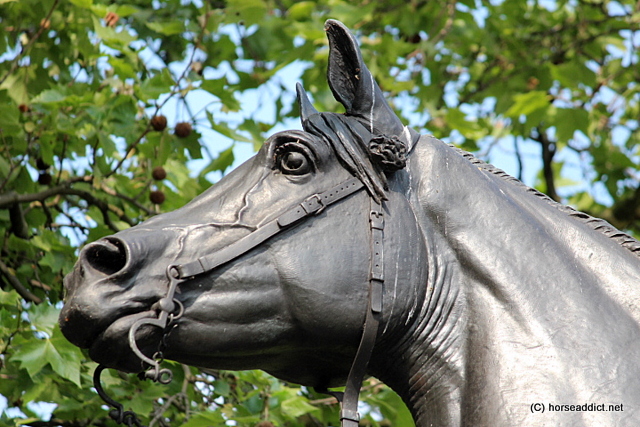
Yesterday’s post was dedicated to 21st Century War Horses . Today I am going back to the 19th Century to take a look at Copenhagen, the horse of the Duke of Wellington, who defeated Napoleon at the Battle of Waterloo.
Copenhagen foaled in 1808 and was of Thoroughbred and Arabian parentage. He was the Duke of Wellington’s favorite horse and was ridden in several battles but the most famous of them was the Battle of Waterloo in June 1815. Wellington was mounted on Copenhagen for some seventeen hours of the battle. When he dismounted he patted Copenhagen on the flank and the horse, quite probably exhausted and overwrought kicked out and narrowly missed Wellington’s head!
He lived to a good age and died in February 1836 aged 28 years. The story goes that he had overindulged in too many sugary treats: sponge cakes, bath buns and chocolate creams. He was buried with full military honors at the Duke of Wellington’s country residence. A few years after his death the Duke was asked, by the United Services Museum, to have Copenhagen disinterred so that his skeleton could be displayed alongside the skeleton of Napoleon’s horse Marengo. The Duke refused and rightly so!
After his father’s death the Duke’s son places a marble grave marker beside the tree that was planted over Copenhagen’s grave. The epitaph read.
“Here lies
COPENHAGEN,
the charger, ridden by
THE DUKE OF WELLINGTON
the entire day of the
BATTLE OF WATERLOO.
Born in 1808. died 1836. God’s humbler instrument though meaner clay
should share the glory of that glorious day.”


Leave a Reply